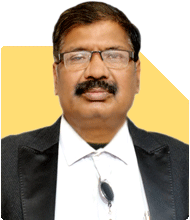Hello Sir,
I'm 35 yrs old IT professional. Earning 1.6 lakhs per month. I have bought an apartment worth 63 lakhs and took a home loan for 50L for 10 years. My question is, should I foreclose the home loan as early as 5 yrs or keep investing in mutual funds simultaneously and keep paying the loan amount. If I pre close the home loan, I feel I will miss the power of compounding in a longer run. Also, most of the interest part on my home loan gets recovered by the bank in the first 5 years as per the loan repayment schedule. Kindly advise
Ans: Balancing Loan Repayment and Investments
It's commendable that you're considering both loan repayment and investment strategies. As an IT professional earning Rs 1.6 lakhs per month, managing your home loan and investments effectively can greatly impact your financial future. Let's explore the options of foreclosing your home loan versus continuing investments.
Understanding the Home Loan Foreclosure
Foreclosing a home loan means paying off the outstanding loan amount before the end of the loan tenure. This strategy helps in saving interest payments. Since home loans are structured so that most interest is paid in the initial years, foreclosing early can reduce the total interest paid. However, it also involves utilizing a large portion of your savings or investments.
Advantages of Foreclosing the Home Loan
Interest Savings: By foreclosing, you save on the total interest outgo. This can be substantial, especially in the first few years.
Debt-Free Living: Being debt-free provides financial security and peace of mind. It eliminates the monthly EMI burden.
Risk Reduction: Foreclosing reduces the financial risk of default in case of unforeseen circumstances like job loss or medical emergencies.
Disadvantages of Foreclosing the Home Loan
Opportunity Cost: Using your savings to foreclose means losing potential returns from investments. The power of compounding works best over a longer period.
Tax Benefits: Home loan interest payments offer tax deductions under Section 24. Principal repayment provides benefits under Section 80C. Foreclosing reduces these tax-saving opportunities.
Liquidity Crunch: Allocating a large sum to foreclose might affect your liquidity. It's essential to maintain an emergency fund for unexpected expenses.
Benefits of Continuing Investments
Power of Compounding: Investing in mutual funds can yield significant returns over time due to compounding. This can outpace the interest saved by foreclosing.
Diversification: Investments in mutual funds offer diversification, spreading risk across different assets. This can enhance overall portfolio stability and returns.
Wealth Creation: Regular investments can lead to substantial wealth creation. Mutual funds, particularly equity-oriented ones, can provide higher returns compared to the interest saved by foreclosing the loan.
Disadvantages of Continuing the Loan
Interest Outgo: Continuing the loan means paying interest over the loan tenure, which can be substantial.
Debt Burden: Having a loan can be stressful, and the EMI obligation affects monthly cash flow.
Market Risks: Investments in mutual funds are subject to market risks. There's no guaranteed return, and market volatility can affect the investment value.
Evaluating Your Financial Goals and Risk Tolerance
To decide between foreclosing the loan and continuing investments, evaluate your financial goals, risk tolerance, and cash flow requirements.
Financial Goals: Define your short-term and long-term financial goals. If achieving certain goals requires higher liquidity or returns, continuing investments might be better.
Risk Tolerance: Assess your comfort with market risks. If you prefer stability and avoiding risks, foreclosing might be suitable.
Cash Flow Management: Ensure you have sufficient monthly cash flow to meet expenses, EMIs, and investments without compromising your lifestyle.
Creating a Balanced Approach
A balanced approach can offer the best of both worlds. Here's how you can structure it:
Partial Prepayment: Instead of full foreclosure, consider making partial prepayments periodically. This reduces the loan principal and interest outgo without exhausting your savings.
Systematic Investments: Continue with your mutual fund investments through systematic investment plans (SIPs). This ensures disciplined investing and benefits from rupee cost averaging.
Emergency Fund: Maintain an emergency fund covering 6-12 months of expenses. This ensures liquidity for unforeseen events without disrupting your investment or loan repayment plan.
Periodic Reviews: Regularly review your financial plan. Adjust the balance between loan prepayment and investments based on changes in income, expenses, and financial goals.
Consulting a Certified Financial Planner
A Certified Financial Planner (CFP) can provide personalized advice. They can help you evaluate the impact of loan foreclosure versus continued investments on your overall financial health. A CFP can also assist in creating a tailored plan balancing debt repayment and wealth creation.
Conclusion
Both foreclosing your home loan and continuing investments have their pros and cons. Evaluate your financial goals, risk tolerance, and cash flow needs to decide. A balanced approach involving partial prepayments and systematic investments can provide stability and growth. Consulting a Certified Financial Planner can offer personalized guidance to optimize your financial strategy.
Best Regards,
K. Ramalingam, MBA, CFP,
Chief Financial Planner,
www.holisticinvestment.in






























